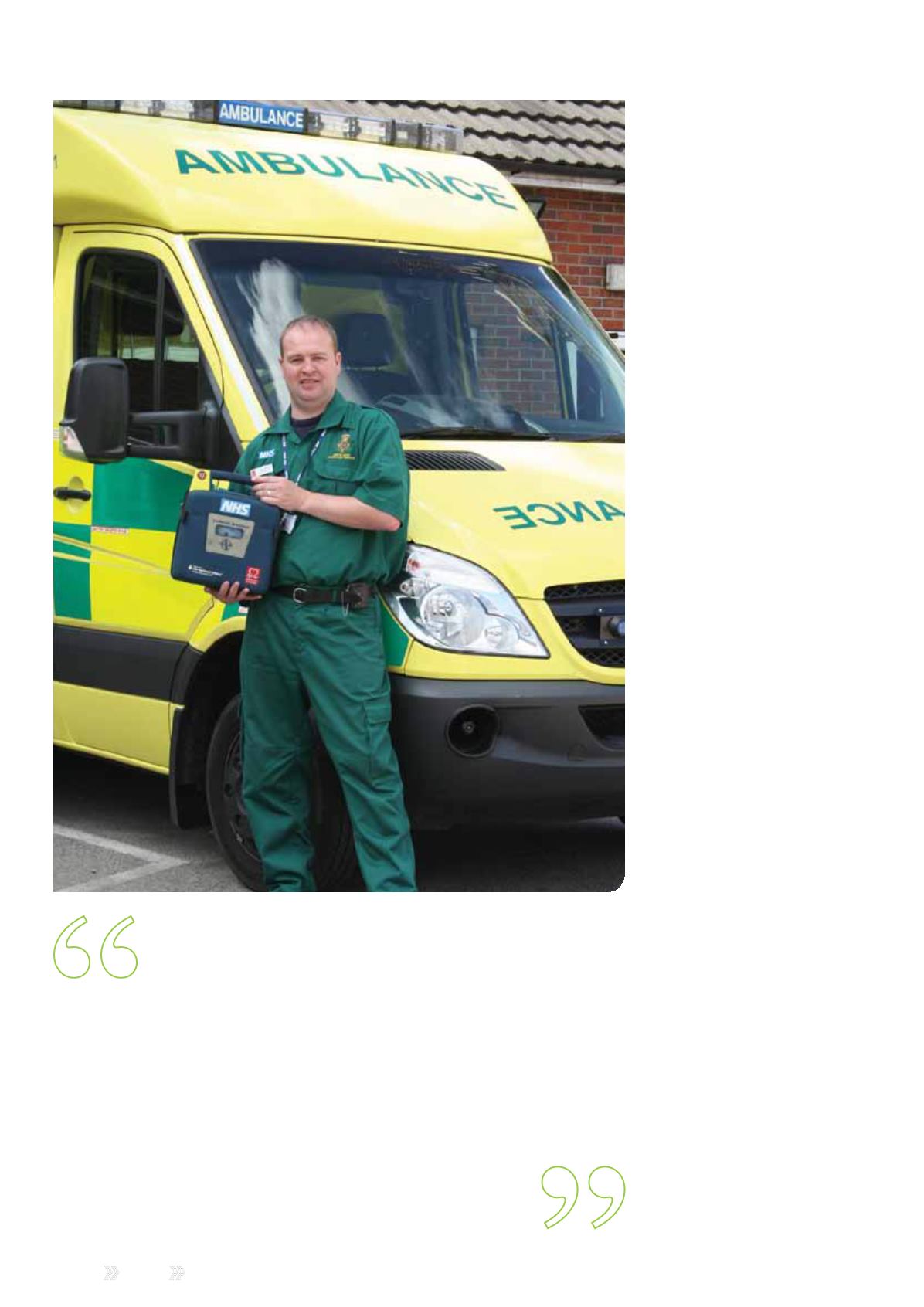
16
|
Reach
Issue 7 2014
Mark Evans has worked for
the NHS since 1997, and has
been in his current role since
2011, looking after his region’s
Community First Responders,
Air Ambulance assets, public
education and training. The NHS
is part of the family – Mark’s father
Geoff has just retired from the
NHS as a supervisor, and Mark’s
wife Nicola is an A & E nurse.
On average, the Airwave TM alerts arrive thirty
seconds quicker than either the old paging service
or mobile phone texts, but the difference can be up
to three and half minutes. Thirty seconds makes a
massive difference to response time, and time is
critical in medical emergencies.
Mark Evans, NWAS Community Resuscitation Manager & British Heart
Foundation (BHF) Healthcare Practitioner for Cumbria and Lancashire
– assuming they were near one, and
assuming, in the case of mobile,
there was coverage – and in this
rural area there often isn’t.
“We also had no way of knowing
where available volunteers were at
any one time, so all volunteers would
get all pages, irrespective of location.
“As the Trust is a user of the
Airwave Service, we realised that
what we needed was a service
that used the same network – so
we could alert the volunteers
immediately, send them to incidents
more efficiently, and keep track of
them to ensure their safety.
“So, a sophisticated two-way
pager device with GPS capability
was identified – it’s called TETRA
Messenger but we call it Airwave
TM – and so began much work to
successfully integrate the TM service
into our control rooms, exhaustively
test and trial the service. Airwave
was completely supportive of
the whole project, joining us for
regular meetings and ensuring their
technical people worked alongside
us until we were happy that the
service was working properly. In
particular, we specifically tested the
service in rural areas where radio
coverage can be a problem, to
ensure it would be effective.
“We had a ten point plan for roll
out, introducing the Airwave TMs
to specific areas and ensuring
all were working correctly before
implementation in the next area. We
have now just completed the initial
roll-out, and 300 of our volunteers are
now equipped with the pagers.
“And what are the benefits? Well,
our control rooms can now send
instant messages within a three-mile
radius of an incident to volunteers
who have checked in as being
available. Once signed on duty
and available volunteers appear on
our computer-aided design (CAD)
alongside our emergency vehicles.
If an emergency call is received
then the controller can identify
immediately what resources they
have available and allocate these
accordingly. Volunteers can respond
instantly about whether they can
attend, they can check in with the
control room when arriving at the
scene, and check out once the
ambulance has arrived.


